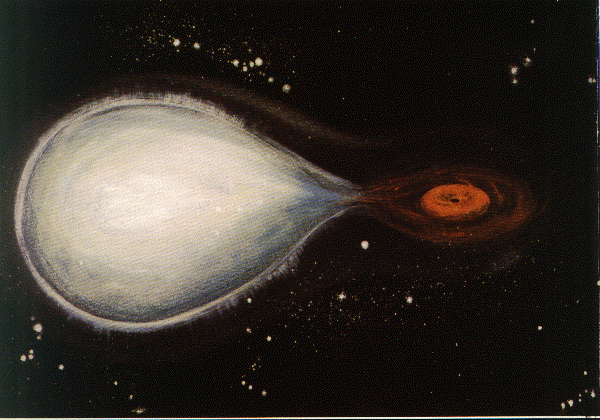Artist's impression of Cyg X-1Cygnus X-1 was identified in 1971 and is one of the best stellar-mass black-hole candidates. The companion star, shown on the left in this artist's conception, is a 33 solar-mass star. Optical spectroscopy of this star revealed that it had a large radial velocity amplitude of about 50 km/sec. That, combined with a 5.6-day period inferred the mass of the compact object to be more than 15 solar masses. This is well beyond the neutron star mass limit, so we assume it to be a black hole. This artists conception of the Cyg X-1 system shows the outer layers of the companion star being stripped off and transfered via Roche lobe overflow into an accretion disk around the black hole. A torus of material is shown spiralling into the black hole. It is from the hot inner regions of this accretion disk that X-rays are produced.
IMAGES |
By Mission |
Stars |
HEASARC Home | Observatories | Archive | Calibration | Software | Tools | Students/Teachers/Public Last modified: Thursday, 26-Jun-2003 13:48:45 EDT |


